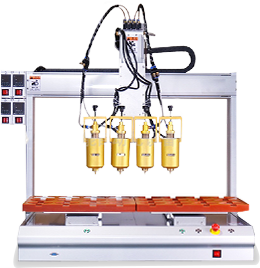

Ferrous metal hollow industrial stamping parts are made of ferrous metal plates such as carbon steel and alloy steel and are processed through precision stamping technology. With the help of advanced presses and customized molds, the plates undergo processes such as blanking, hollow punching, and bending to accurately shape a product form that combines functionality and structural aesthetics. Its surface is treated with processes such as plastic spraying and electrophoresis to present a matte granular texture with anti-corrosion and wear-resistant properties. The products are widely used in mechanical equipment, electronic equipment, hardware frames and other fields. They can be used as mounting brackets, fixing seats, and functional connectors. The hollow structure can achieve weight reduction, cable threading, component adaptation and other functions, providing reliable support for the modular integration and stable operation of industrial equipment, and adapting to the diverse needs of complex industrial scenes.
3. Flexible customization: It supports customization of hollow shape (arc, special shape), size, and surface treatment color according to equipment requirements to meet the personalized design and functional adaptation of different industrial scenarios.
Features Dimension | Black metal hollow stamping parts | Conventional metal stamping parts | Application Value |
Functional integration | Multifunctional hollow, suitable for assembly | Single structure | Improve equipment integration efficiency |
Protection performance | 480 hours salt spray protection | Weak protection | Stable in outdoor/high humidity conditions |
Flexible customization | Shape and color can be customized on demand | Standardization is the main | Meet differentiated industrial design |
Weight Control | Hollowing out weight reduction 10% - 25% | Heavy | Adapting to the trend of lightweight equipment |
III. Product Details
(I) Process Flow
1. Mold Design: Use CAD software to accurately plan the hollow pattern and hole size. After CNC processing and heat treatment, the mold accuracy reaches ±0.03mm to ensure the consistency of stamping parts.
2. Plate Pretreatment: Flatten and level the black metal plate, remove oil stains and rust, and improve the surface roughness through sandblasting to enhance the adhesion of subsequent coatings.
3. Stamping: On a 100-600T press, blanking, hollow punching, and bending are completed at one time. The pressure is monitored in real time to avoid cracking and deformation of the plate and ensure the integrity of the hollow structure.
4. Surface treatment: Use spraying technology (optional black, gray and other colors), pre-treatment, electrostatic spraying, and high-temperature curing to form a 50-80μm thick protective layer, which is both anti-corrosive and beautiful.
(II) Applicable scenarios
Mechanical equipment: As a mounting bracket for transmission components and a connecting piece for equipment frame, the hollow structure is suitable for cable routing, which helps the equipment to be lightweight and modularly assembled, such as automated production line equipment.
Electronic equipment: Processing server chassis fixing seats and industrial computer heat dissipation brackets. The hollow design accelerates air circulation, while achieving precise installation of components to ensure stable operation of electronic equipment.
Hardware frame: Used for furniture hardware and architectural decoration frames. The black metal texture and hollow aesthetics are integrated to create an industrial style appearance, such as display racks and partition brackets.
(III) Quality control
Implement "three-level quality inspection": first-piece inspection (confirming mold accuracy and process parameters), process sampling (detecting dimensions and coating thickness every 2 hours), and full inspection of finished products (three-coordinate measurement of dimensions, salt spray test to verify protective performance). Tensile testing is used to ensure that the strength meets the standard, and coating adhesion testing is used to ensure the reliability of surface processing, providing industrial equipment with core components that combine functionality and quality, enabling enterprises to produce efficiently.
 Headquarters tel.
Headquarters tel. E-mail.
E-mail.